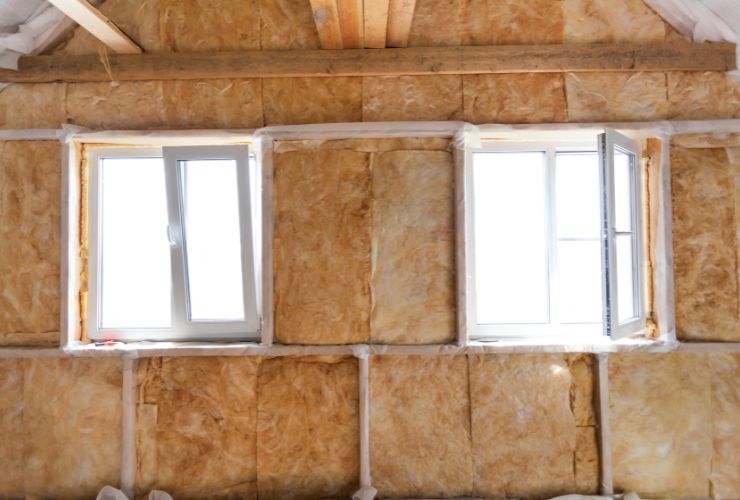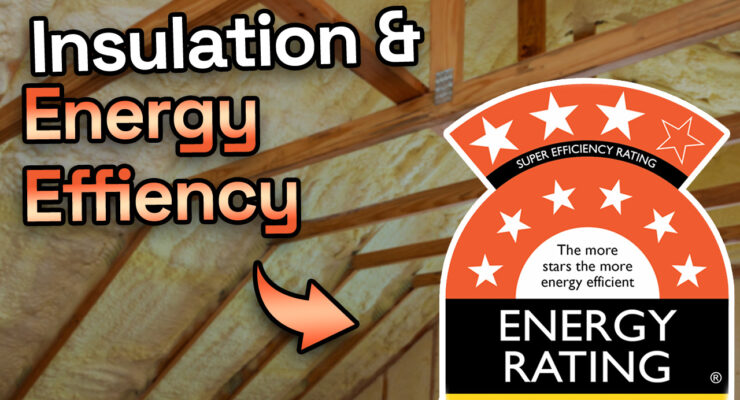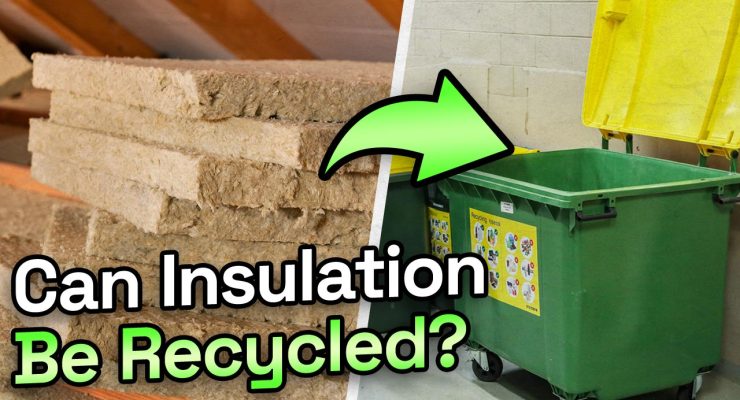Fast read
Insulation helps homes stay warm in winter and cool in summer by slowing heat transfer and keeping it inside. In addition, it traps air inside the substance, reducing the rate of convective and conductive heat transfer.
We assess the effectiveness of insulation by its R-value, which reflects its resistance to heat flow. Builders use materials like fibreglass, mineral wool, and plastic fibres for insulation in buildings. This helps to save energy and lower costs. Insulation is applied to walls, roofs, and windows.
Insulation has a quick payback time and might be beneficial for many years.
Insulation works by trapping air in the insulation materials
Insulation acts like a cosy blanket for our homes, keeping them snug and comfy no matter what the weather’s like outside. Think of it as a comforting embrace around our house, crafted from fluffy fibreglass or resilient foam.
During colder months, home insulation prevents heat loss from our heating sources, like fireplaces or heaters, by trapping warm air inside. This ensures that our living spaces remain snug and pleasant, akin to being wrapped in a cosy blanket on a chilly evening.
In warmer weather, insulation acts as a barrier against the heat of the sun, preventing it from infiltrating our homes and causing discomfort. It effectively blocks the transfer of outdoor heat, helping to keep indoor temperatures refreshingly cool.
Moreover, insulation doesn’t just halt heat—it also slows it down. Heat can travel through solid materials (conduction), fluids or gases (convection), and as waves (radiant heat). Insulation tackles all three ways heat moves around, so it’s great at keeping your indoor temperature steady.
Heat conduction involves heat moving through solid substances, like a hot pan heating the stove it sits on. Insulation materials act like barriers, slowing down how heat moves around. This keeps indoor temperatures comfy and prevents too much heat from escaping or getting inside.
In convection heat transfer, warm air rises while cold air sinks, leading to heat movement through fluids or gases. Insulation traps air molecules, disrupting this heat flow and promoting a stable indoor temperature.
Lastly, radiant energy involves the transmission of heat in wave form, such as sunlight warming surfaces. Insulation plays a role in reflecting heat away from our homes, even during intense sunlight, thereby contributing to comfort and energy efficiency.
Fundamentally, insulation quietly carries out its function, guaranteeing our residences maintain comfort and energy efficiency all year round. A modest investment yields substantial returns on comfort and energy cost savings.

The metric of R-values
The R-value is like a score that tells us how good insulation is or the insulation value at keeping heat energy inside or outside. Kind of like a grade that shows how well insulation works.
Imagine insulation as a cosy blanket made of tiny air pockets. These air pockets help to trap heat, just like how a warm blanket keeps you snug on a chilly night. You can place insulation between the beams or joists in your walls or ceilings to keep your home comfy.
The most common insulation materials in Australia are fibreglass and mineral wool. You can find them in batts or rolls, like large, soft blankets you can cut to fit your home.
Fibreglass and Rockwool are tough materials that don’t weigh much and can resist fire. They’re great for keeping heat inside buildings, which makes them perfect for insulation.
Other types of insulation also include mineral wool and natural fibres, as well as plastic fibres like polyester. These materials work like blankets to keep heat in or out of your home. Some insulation types, like fibreglass and mineral yarn, are denser and have a higher R-value. This makes them better at keeping your home comfortable.
When choosing insulation, consider the R-value. It shows how well the insulation keeps your home warm.
Insulation
Adding insulation to a building gives it extra protection against the low and high temperatures outside. You can put insulation on the walls inside or outside the building, like wearing a warm jacket when it’s chilly outside.
When we discuss insulating a building, we focus on three main areas: the roof, the walls, and the windows. These are the places where heat can sneak in or escape, so it’s important to keep them well-insulated.
Insulation doesn’t try to block out the cold completely. Instead, it works to stop the warmth inside from escaping. Wrapping a present in a cosy blanket is like keeping it warm and snug.
We use special insulation to make buildings more energy-efficient. We also create spaces in walls and ceilings to add more insulation.
This helps regulate the temperature in our house. As a result, we don’t have to use as much heat. This saves us money on energy costs.
While insulation can’t stop all heat loss, it does a pretty good job of reducing it. The good thing is that you have to pay for insulation upfront. However, it will save you money on energy bills in a few years.
This makes it worth the initial cost. Plus, once it’s in place, it keeps working for decades, giving you long-term savings and comfort.
So, by adding insulation to your home or building, you’re not just staying warm in the winter and cool in the summer—you’re also saving money and helping the environment by using less energy. A win-win for everyone!



